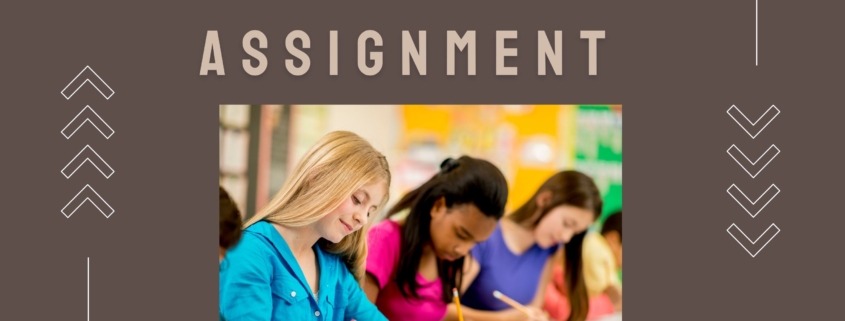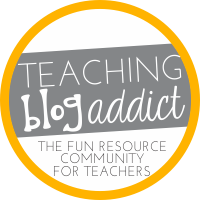One-Pager Assignment in ELA
What is a One-Pager Assignment in ELA?
A one-pager assignment in ELA is a creative and versatile tool that allows students to demonstrate their understanding of a text through a single, visually appealing page. They encourage critical thinking, creativity, and provide an opportunity for students to showcase their artistic abilities. Plus, they’re a great alternative to traditional essays or written assignments.
One-pagers can be assigned any time of the year, but they are definitely a valuable end-of-the-year activity for fictional texts. They can be a platform for students to reflect on their learning journey throughout the year. At this point in the year, students know about plot, characters, theme, setting, foreshadowing, flashback, figurative language… all of those terms we’ve spent all year talking about. A one-pager assignment will allow students to demonstrate their knowledge of these terms as well as their growth as readers, writers, and thinkers in a creative and visual way. And one-pagers can also be a lot of fun for students because they get to showcase their individuality and artistic skills while still engaging with the text.
How Are One-Pager Assignments in ELA Done?
Now, let’s move on to some examples of how one-pager assignments in ELA can be done. There are some different approaches that you can take.
The Classic Approach
Let’s start with the classic approach. A one-pager assignment in ELA can begin with a central image or symbol that represents the core theme or idea of the text. For example, if students were studying a poem about nature, they could create a vibrant, hand-drawn forest as the centerpiece of their one-pager. Then, they could incorporate quotes, key phrases, or lines from the poem around the image, emphasizing their interpretation and analysis. You can have them write the theme somewhere on the page and put a shape around it. They can analyze a character and include text evidence somewhere on the page. They can draw pictures to illustrate the theme. This is the style that I usually use, and I give my students a list of what I want them to include. My 8th graders recently did one for Juliet’s soliloquy in I think it’s Act 4 of Romeo and Juliet. I gave them a list of what I wanted them to include. They had to find at least two literary devices and label them. They had to write a summary of the soliloquy. I had them choose words that stood out and create a border with those words. And I give them the freedom to design the page however they wanted. They put shapes around what they wrote. They included color and pictures. They had to fill up the page and make it visually appealing.
The Graphic Organizer Approach
Another approach for completing a one-pager assignment in ELA is the mind map or graphic organizer style one-pager. In this case, students can create a central image or word that represents the main character or concept in the text. From there, they can branch out, using arrows or lines, and add key elements like character traits, significant events, or symbols related to the story or poem. This approach encourages students to think deeply about the connections within the text and how they contribute to its overall meaning. They can add their own shapes around text and colors and images somewhere on this as well.
The collage-Style Approach
One approach that allows for even more artistic expression is the collage-style one-pager. Students can use a mix of magazine cutouts, printed images, drawings, and even their own photographs to create a visually rich representation of the text. They can layer these elements, incorporating text snippets, quotes, and reflections alongside the visuals. This approach is really good for engaging students who have a knack for design.
Why Assign A One-Pager Assignment in ELA?
One-pager assignments in ELA are quick, and they provide students with a variety of ways to express their understanding and creativity. They have a lot more fun with these than they do with essays, and if your students are anything like mine, they’re pretty checked out at the end of the year, so being able to express their analysis of a text in this way just seems to work.
Tips for Implementing One-pager Assignments in ELA Effectively
I think it’s very important to provide clear guidelines and expectations. Give them specific instructions on what elements to include, such as key quotes, symbols, or themes, depending on the focus of the assignment. However, while you want to give guidelines, it’s important to give students some flexibility in their one-pagers. Encourage them to be creative and explore different techniques that match their individual strengths and interests. I have found that some students prefer digital tools to create their one-pagers, using software like Canva or Google Slides, while others may prefer traditional pen and paper. And I do find that students will be more motivated and engaged when they have the freedom to express themselves in ways that they enjoy and feel comfortable with.
It is also a good idea to provide students with examples of high-quality one-pagers. Show them exemplars from previous students or even create your own as a model. If you google one-pagers, you can find some really good examples. This will help them understand the expectations and inspire them with ideas for their own creations.
Finally, it’s important to provide students with an opportunity to share and discuss their one-pagers with their peers. This can be done through gallery walks or presentations.
So I hope you now have a clear understanding of how to incorporate a creative one-pager assignment in ELA for poems and short stories into your end-of-the-year curriculum. And remember, this can be done throughout the year, so keep that in mind as you start thinking about next year.






